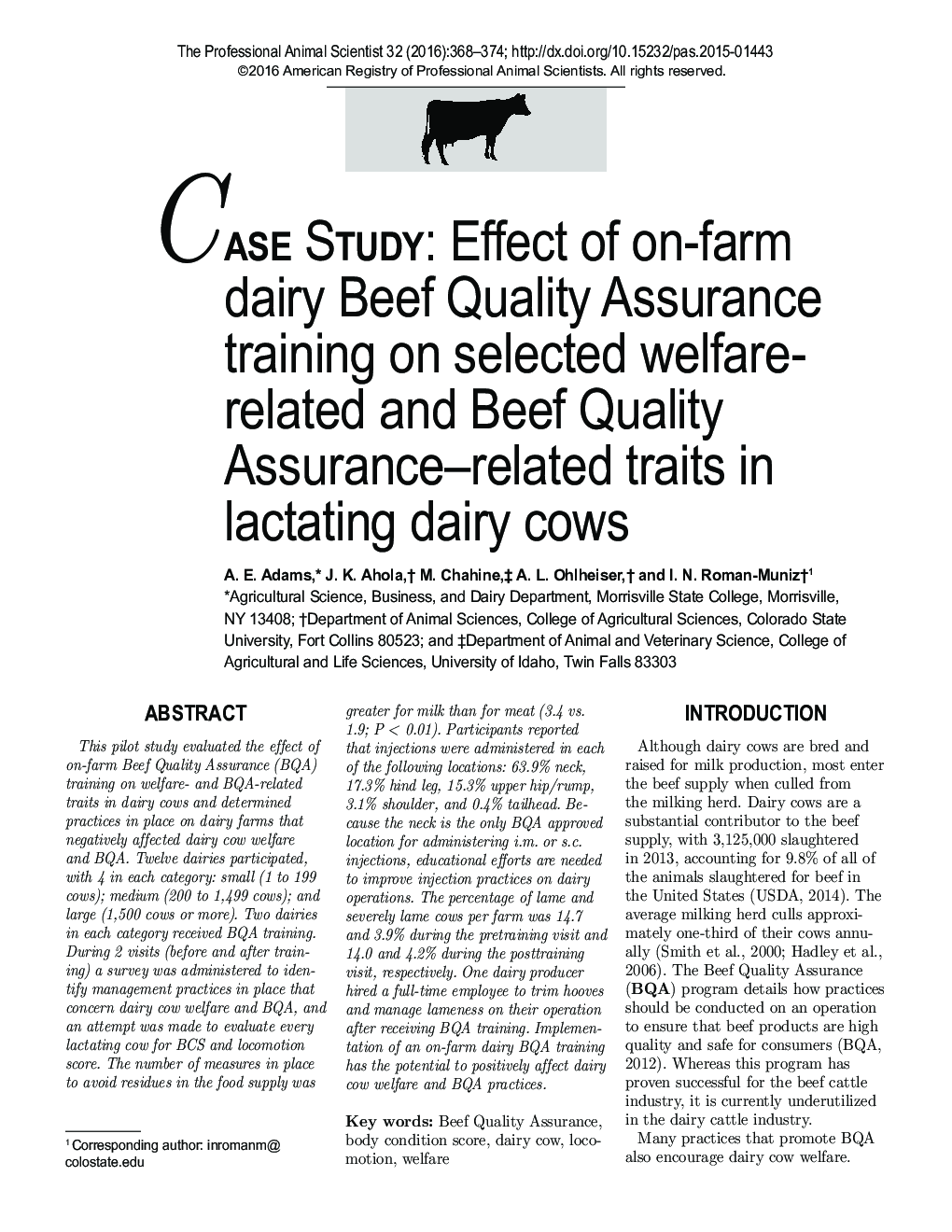| Article ID | Journal | Published Year | Pages | File Type |
|---|---|---|---|---|
| 10161714 | The Professional Animal Scientist | 2016 | 7 Pages |
Abstract
This pilot study evaluated the effect of on-farm Beef Quality Assurance (BQA) training on welfare- and BQA-related traits in dairy cows and determined practices in place on dairy farms that negatively affected dairy cow welfare and BQA. Twelve dairies participated, with 4 in each category: small (1 to 199 cows); medium (200 to 1,499 cows); and large (1,500 cows or more). Two dairies in each category received BQA training. During 2 visits (before and after training) a survey was administered to identify management practices in place that concern dairy cow welfare and BQA, and an attempt was made to evaluate every lactating cow for BCS and locomotion score. The number of measures in place to avoid residues in the food supply was greater for milk than for meat (3.4 vs. 1.9; P < 0.01). Participants reported that injections were administered in each of the following locations: 63.9% neck, 17.3% hind leg, 15.3% upper hip/rump, 3.1% shoulder, and 0.4% tailhead. Because the neck is the only BQA approved location for administering i.m. or s.c. injections, educational efforts are needed to improve injection practices on dairy operations. The percentage of lame and severely lame cows per farm was 14.7 and 3.9% during the pretraining visit and 14.0 and 4.2% during the posttraining visit, respectively. One dairy producer hired a full-time employee to trim hooves and manage lameness on their operation after receiving BQA training. Implementation of an on-farm dairy BQA training has the potential to positively affect dairy cow welfare and BQA practices.
Related Topics
Life Sciences
Agricultural and Biological Sciences
Animal Science and Zoology
Authors
A.E. Adams, J.K. Ahola, M. Chahine, A.L. Ohlheiser, I.N. Roman-Muniz,
